Visiting Hallstatt was all about experiencing its renowned reputation. Hallstatt is an ancient town in Austria—small in size but famous worldwide. It’s known as the “most beautiful town in the world” and “the world’s oldest salt town.” Today, it has become a popular destination for couples, recognized as one of the world’s iconic romantic spots. With such fame, it felt essential to visit, and indeed, it was well worth the trip.
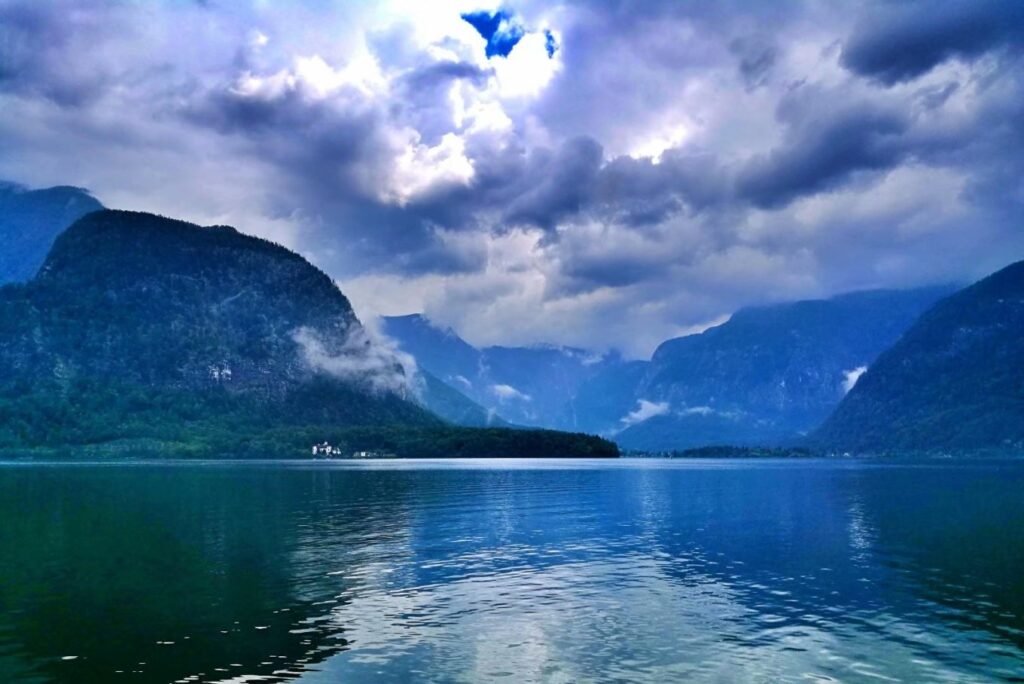
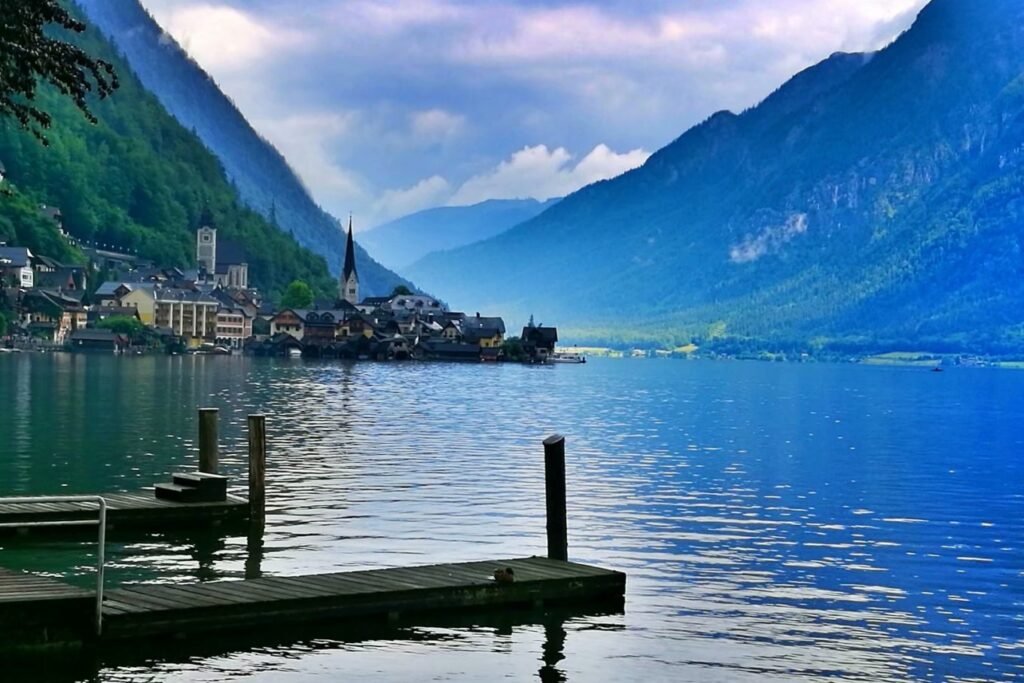
The beauty of Hallstatt is centered around Lake Hallstatt. This alpine lake, fed by glacier meltwater from the surrounding Alps, is rich with natural charm. Among the 14 natural lakes in the Salzkammergut region, Lake Hallstatt stands out for its unparalleled beauty and reputation. Perhaps the lake’s stunning scenery and romantic ambiance are what make it a hotspot for couples seeking unforgettable moments.
From afar, the lake appears as a mirror reflecting the surrounding thousand-meter-high peaks. The tranquil water, surrounded by lush green forests and steep mountains, creates an otherworldly beauty, like a hidden paradise on Earth.


Driving along the lakeside road, we soon reached the town of Hallstatt. Stepping into the town felt like entering a dream. The tightly packed houses, with red roofs and white walls, are scattered along the lakeshore, blending seamlessly into the misty mountains and shimmering lake. The pointed spire of the town’s small church rises high, resembling a sailboat poised to set off into the misty waters—a captivating sight indeed.
On misty mornings, with barely a breeze, Lake Hallstatt looks like a jewel embedded between the high mountain valleys. The waterfront houses, perfectly aligned along the lake’s edge, add to the charm, as if wrapped in a delicate ribbon. Most of the homes are built directly along the water, taking full advantage of the lakeside location. Docks, boathouses, and piers are common sights, with residents docking boats right outside their windows. Here, one can enjoy the view of mist rising from the lake in the morning or the dazzling sunset in the evening—a lifestyle that seems almost too idyllic to be real.
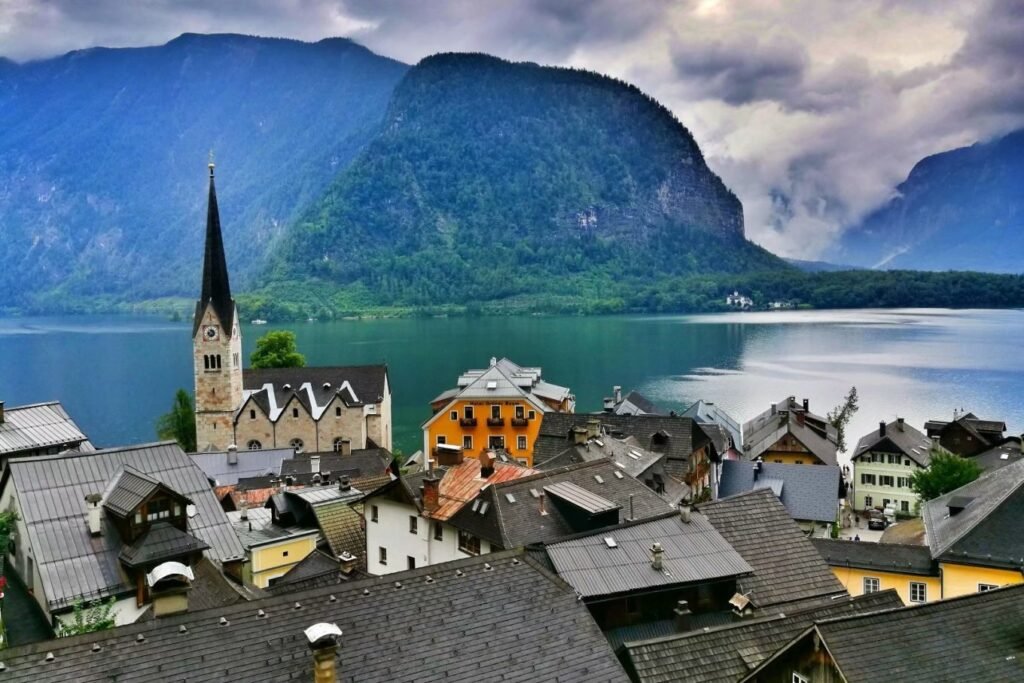
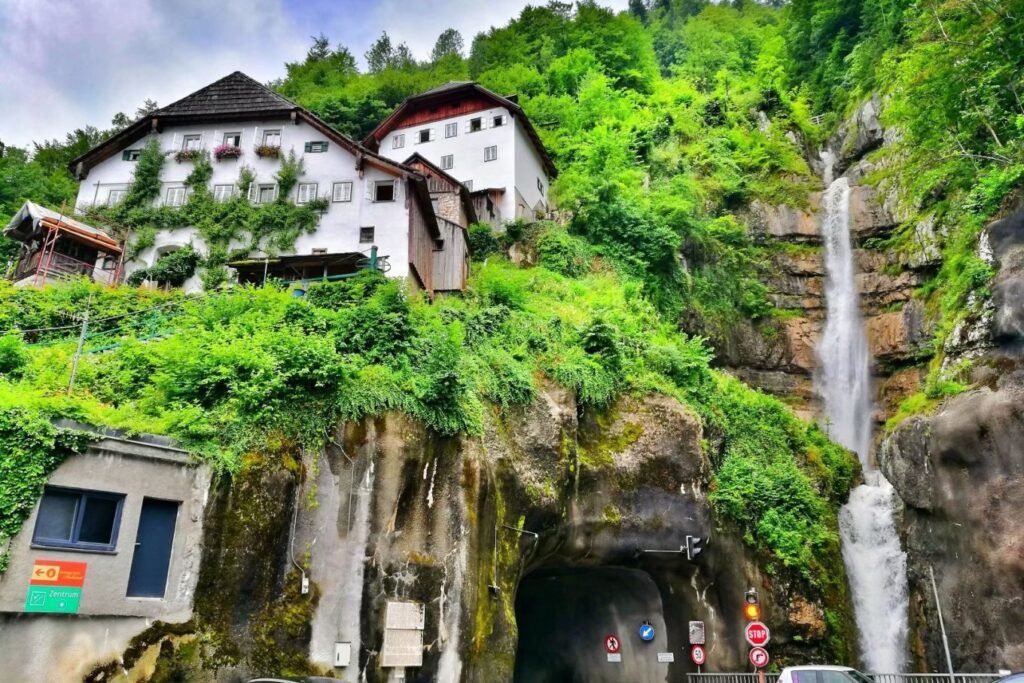
As you wander through the narrow streets of Hallstatt, you’ll notice that most homes are made of wood. Though similar in design, each house has unique decorative elements, with intricately carved balconies, colorful facades, and personalized ornaments. The town’s architecture reflects both rustic simplicity and refined craftsmanship, creating a warm and authentic charm. Artists and writers are drawn to Hallstatt, finding inspiration in its serene beauty, and their work has left a lasting cultural imprint on the town.
While Hallstatt may not have many historical monuments, it does boast a few significant sites. Notable landmarks include a Catholic church dating back to 748 AD and a Protestant church built in 1320. Nearby attractions include the Dachstein Ice Caves, where ice remains frozen year-round, and the town’s ancient salt mine, a site of immense historical importance.
The salt mine is central to Hallstatt’s identity and history. In fact, the name “Hallstatt” is believed to be derived from the ancient Celtic word “Hall,” meaning “salt.” Situated in Upper Austria’s Salzkammergut region, Hallstatt has been a renowned center for salt mining for centuries. Archaeological discoveries in the area include tools used for salt extraction and even a preserved ancient body, known as the “Man in Salt.”

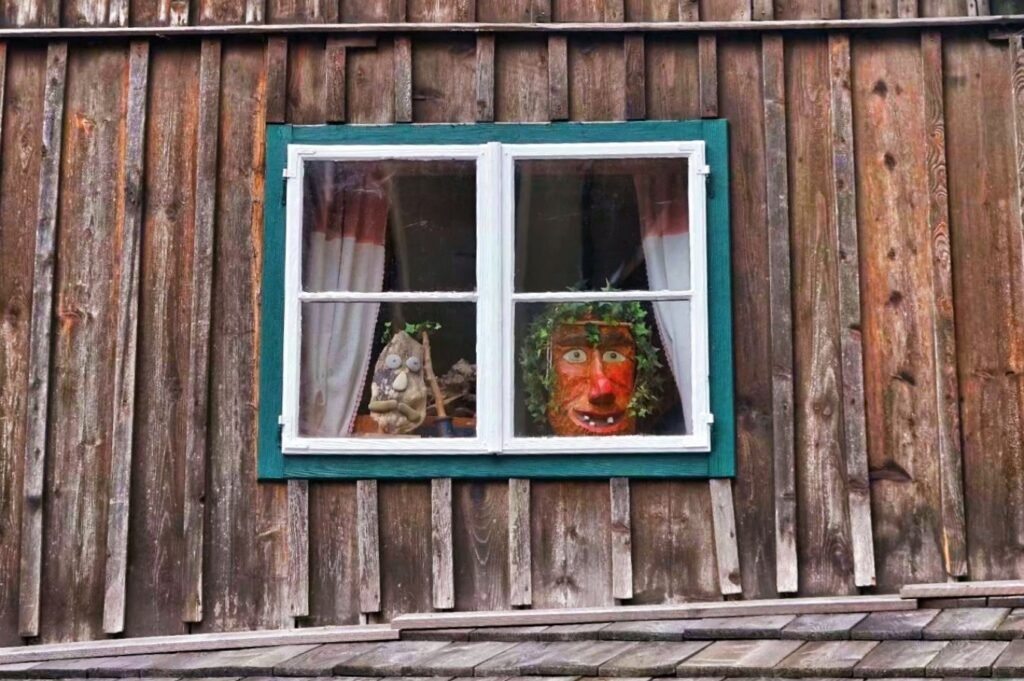
Salt mining in Hallstatt dates back to at least 900 BC. It was the production and trade of salt that allowed the town to prosper and develop. Today, mining operations have ceased, and the ancient salt mines have been transformed into tourist attractions, allowing visitors to explore and learn about the town’s rich history.
In 1997, Hallstatt was designated a UNESCO World Heritage site. The town now features a dedicated World Heritage Museum, showcasing the history of Hallstatt and its development over time. While Hallstatt’s past was built on salt, its future rests on preserving and sharing its unique blend of history and natural beauty.

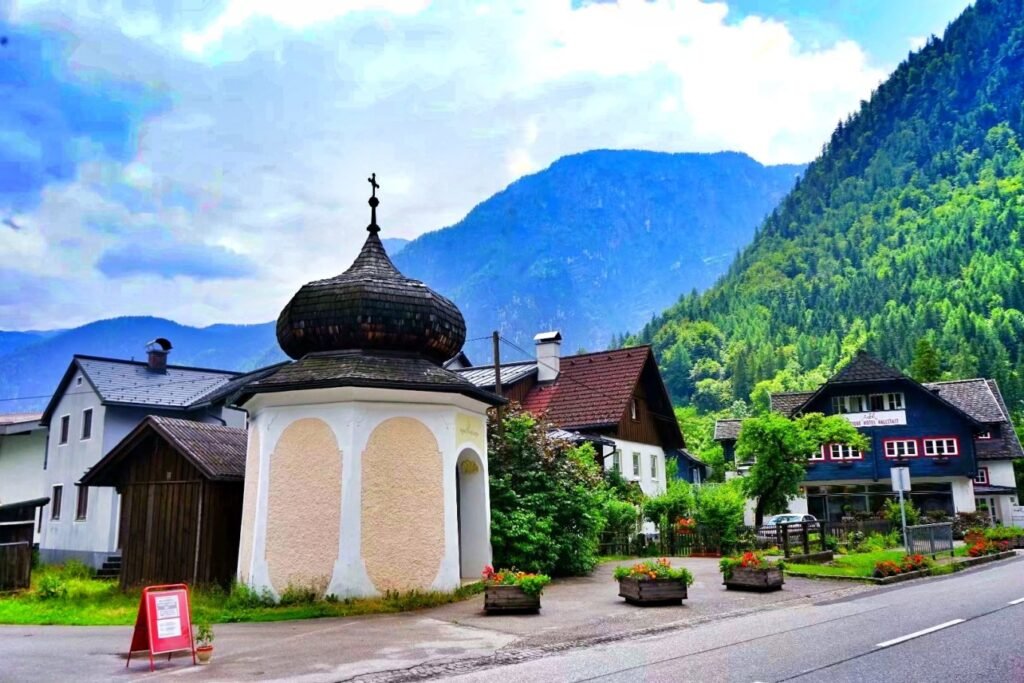
Innsbruck
Unlike most Austrian cities, which are concentrated in the east or central regions, Innsbruck—the country’s fifth-largest city—is located in the remote western border area. It lies near Germany, Italy, and Switzerland, about 500 kilometers from Vienna. Innsbruck is the capital of Tyrol, a charming city nestled in the valleys of the Alps along the Inn River, which gave the city its name—”Innsbruck” meaning “bridge over the Inn.”
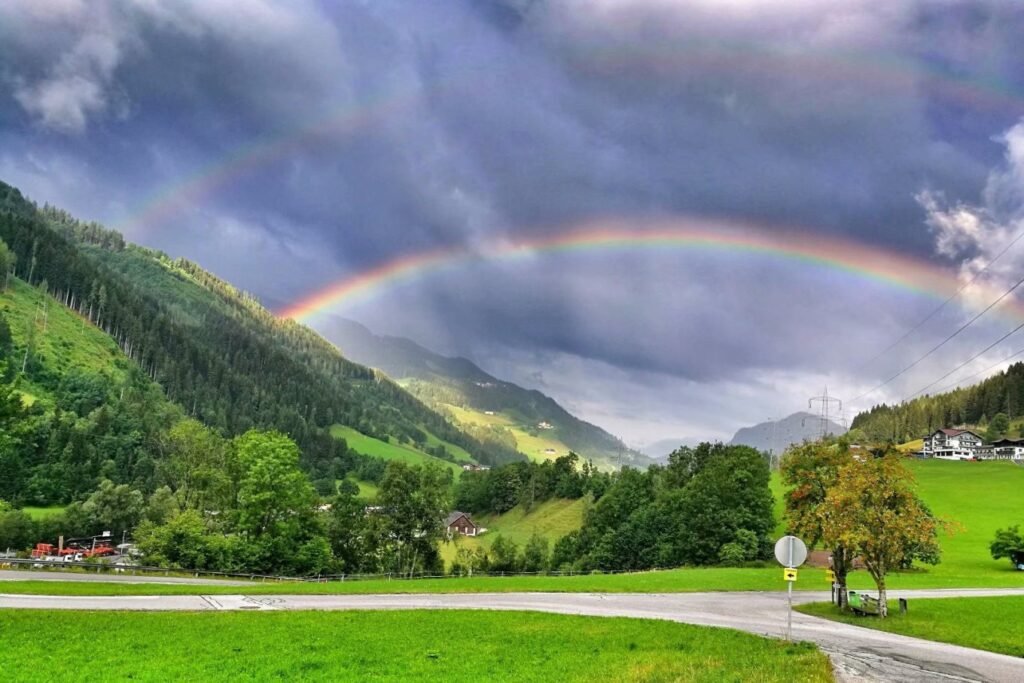
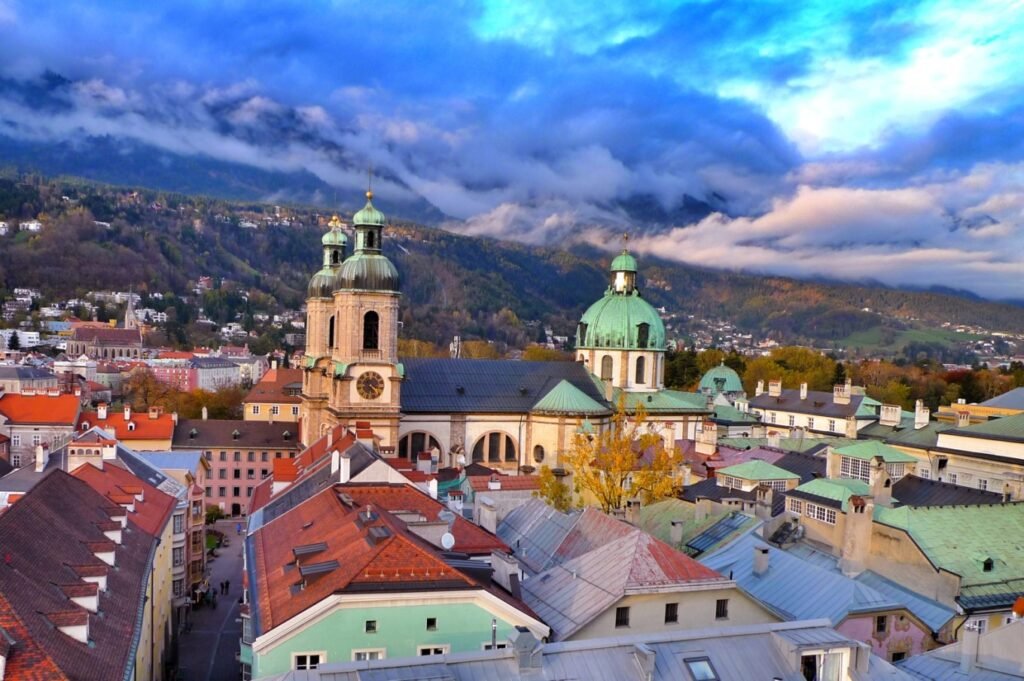
The city began to take shape around 1180 and was officially established in 1239. Before the bridge was built, only a few small villages dotted the riverbanks, but the construction of the bridge spurred gradual development. Surrounded by towering mountains, Innsbruck enjoys both the beauty and protection of the Alps, which shelter the city from harsh weather and create a pleasant, livable environment. Thanks to its breathtaking natural landscape, Innsbruck has become a renowned destination.
Austria’s mountains are as famous as its music, and Innsbruck sits at the heart of the Alps. No matter where you stand in the city, snow-capped peaks are always visible. The city’s layout follows the valleys and rivers, with lush greenery, charming buildings, and Gothic architecture blending perfectly into the surrounding alpine scenery. The beauty of Innsbruck once captivated the imperial family, and from 1420 to 1665, it became a residence for the Habsburg dynasty, marking the start of a glorious chapter in the city’s history.
During the reign of Emperor Maximilian I, Innsbruck became the imperial center. It was in this period that the city flourished economically, culturally, and artistically, setting the foundation for the expansion of Habsburg power. Many of the palaces, castles, churches, tombs, triumphal arches, and medieval structures that remain in Innsbruck today stand as reminders of the city’s imperial past. Among them, the Golden Roof, built under Emperor Maximilian I, is a prominent symbol of Innsbruck’s heritage. Innsbruck rightly earns its title as a royal city, preserving the charm of its medieval origins with old stone streets, narrow alleys, and classical European architecture at every turn. Today, the city is divided into an Old Town and New Town, with most of the attractions concentrated in the Old Town.
In addition to its historical architecture, Innsbruck’s most alluring feature is its natural landscape. Nestled in an alpine glacier valley, surrounded by snow-covered peaks, waterfalls, glaciers, serene lakes, lush valleys, dense forests, and scenic pastures, the city offers a paradise for nature lovers. The beauty of Innsbruck is most evident in its connection to winter sports. The Nordkette mountains, part of the Alps, surround the city, with their slopes providing opportunities for hiking and cycling in summer and transforming into ski resorts in winter.
Innsbruck boasts six ski areas, with over 200 kilometers of ski trails that attract snow enthusiasts from around the world. This small alpine town has hosted the Winter Olympics twice—in 1964 and 1976—earning it a place in Olympic history. Even today, Innsbruck remains an Olympic city and a vibrant university town.


Though Innsbruck may seem like a peaceful town most of the time, it comes alive during festivals and holidays. The city offers a wide range of activities, from summer sports and leisure activities to thrilling winter snow adventures. Those not interested in sports will still find plenty of entertainment here. Innsbruck has cafés, bars, casinos, theaters, and a variety of museums, art galleries, and libraries, ensuring that every visitor finds something enjoyable. No matter your interests, Innsbruck promises a lively and fulfilling experience, leaving no room for boredom or disappointment.

Ambras Castle is a late Renaissance castle and is now a national museum, where the paintings, artworks and weapons of the Habsburg dynasty are displayed.
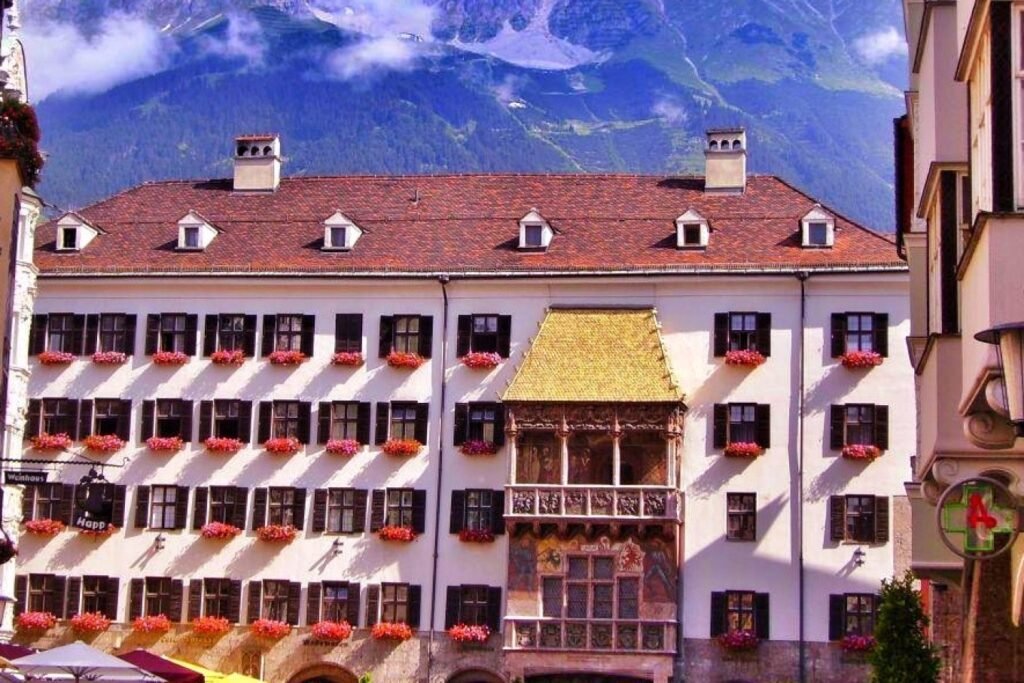
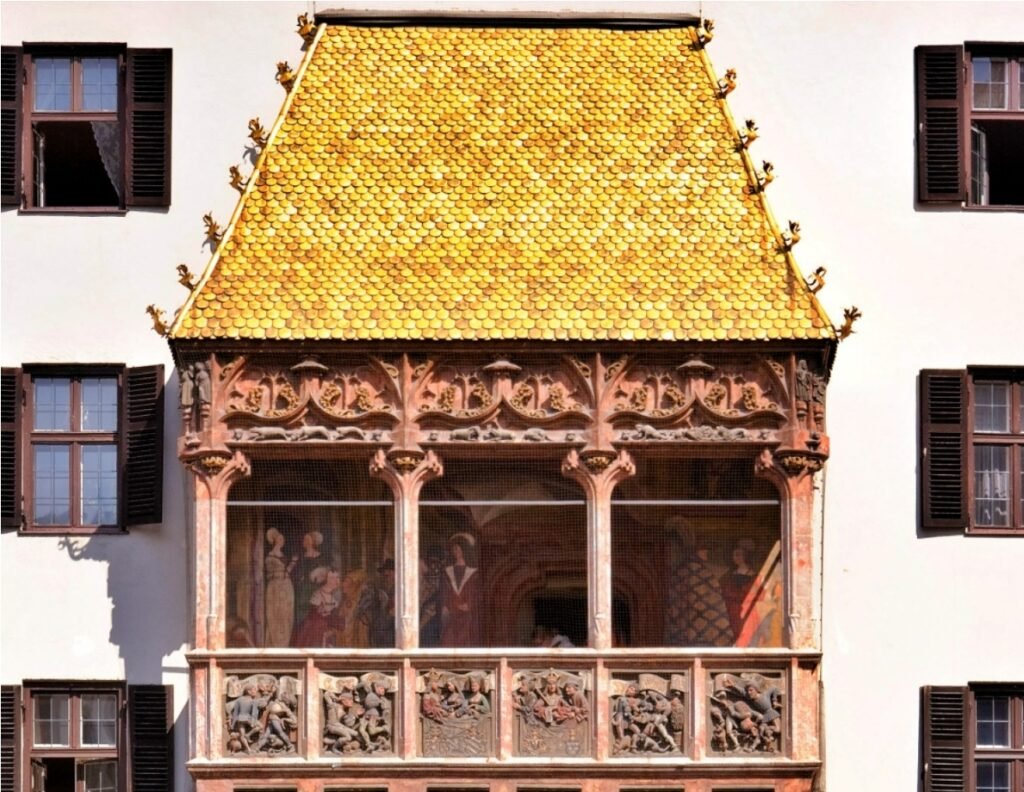
The Golden Roof (Goldenes Dachl) located in the old town was built in 1500 to commemorate the engagement of Maximilian I.
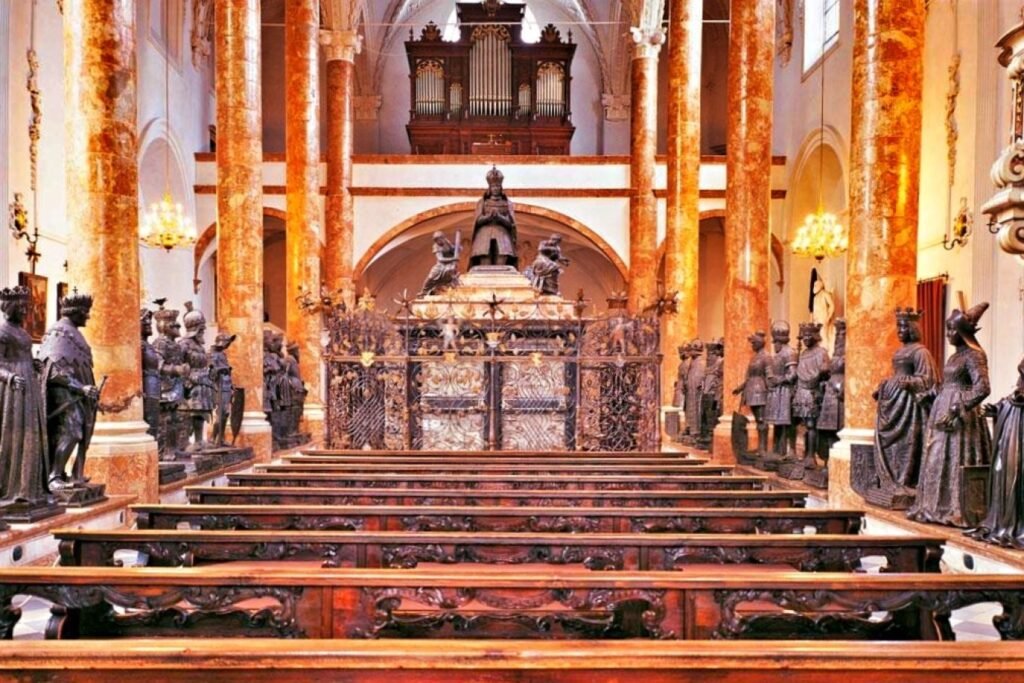

The sarcophagus of Maximilian is placed in the Hofkirche (Royal Church), and there are 28 statues of figures from the Habsburg dynasty on both sides.
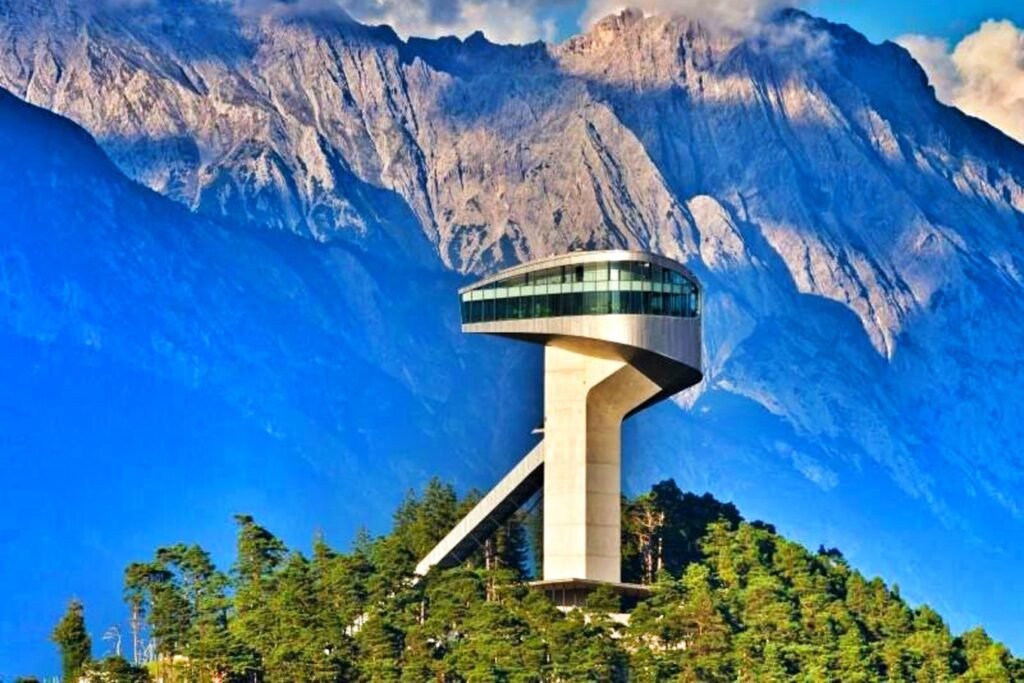

The Bergisel Ski Jump Tower is a Winter Olympics facility that is still in use today.


